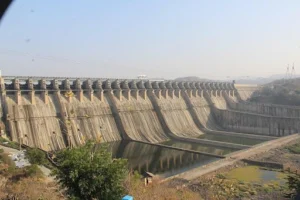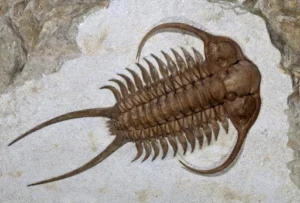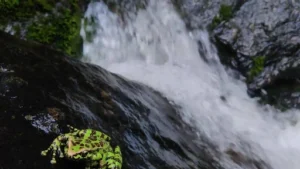UPSC GS 1
Sardar Sarovar Dam
- News: The water level of Gujarat’s Sardar Sarovar Dam recently rose to 136.43 metres, just over two metres below its full reservoir level.
- About Sardar Sarovar Dam: The Sardar Sarovar Dam is a concrete gravity dam located on the Narmada River at Kevadia in Gujarat’s Narmada district. It was named in honor of Sardar Vallabhbhai Patel, a key leader in India’s independence movement.

- Height and Ranking: Standing at 163 metres, it is the third highest concrete dam in India, following the Bhakra Dam (226 metres) in Himachal Pradesh and the Lakhwar Dam (192 metres) in Uttar Pradesh.
- Global Standing: In terms of concrete volume, the Sardar Sarovar Dam ranks as the second largest gravity dam in the world, only after the Grand Coulee Dam in the USA.
- Part of Narmada Valley Project: The dam is a vital component of the Narmada Valley Project, a large-scale hydraulic engineering initiative aimed at building a series of multipurpose irrigation and hydroelectric dams along the Narmada River.
- River Catchment Area and Spillway Capacity: The dam’s catchment area spans 88,000 sq. km, with an impressive spillway capacity capable of discharging 87,000 cubic meters per second.
- Longest Canal Network: Sardar Sarovar features the world’s longest canal network, which includes the Narmada Main Canal, stretching 2,500 km with additional branch canals, distributaries, and channels reaching a total length of 5,500 km.
- Largest Irrigation-Lined Canal: The Narmada Main Canal, measuring 458.3 km and with a discharge capacity of 1,133 cumecs, is the world’s largest irrigation-lined canal.
- Power Distribution: The power generated from the dam is shared between Madhya Pradesh, Maharashtra, and Gujarat in the proportion of 57%, 27%, and 16%, respectively.
UPSC GS 2
BRICS Literature Forum 2024
- News: BRICS Literature Forum 2024 commenced in Kazan, Russia on 11 September 2024.
- Theme: This year’s forum focuses on “World Literature in the New Reality: Dialogue of Traditions, National Values, and Cultures.”
- Participants: The forum brings together renowned writers, poets, philosophers, artists, and scholars from BRICS nations (Brazil, Russia, India, China, and South Africa) to share ideas and experiences.

- Plenary Session: During the plenary session, participants emphasized the importance of literature in promoting unity and cooperation among different societies.
- Session on Indian Authors: A special session, titled “Meet the Authors from India,” explored the theme “Volga to Ganga: Celebration of Tradition and Multiculturalism,” discussing the role of river-based cultures in contributing to multiculturalism and social progress worldwide.
- Significance: The forum serves as a platform for intellectual exchange, highlighting how literature can connect cultures and promote social harmony across nations.
UPSC GS 3
Trilobites
- News: A recent study revealed that a trilobite species with exceptionally well-preserved fossils from upstate New York has an additional set of legs beneath its head.
- About Trilobites: Trilobites are an extinct group of marine arthropods. Their name, derived from Latin, means “three-part body.”

- Evolutionary Timeline:
-
- Trilobites first appeared approximately 521 million years ago, shortly after the Cambrian period began.
- They thrived for nearly 300 million years, spanning most of the Palaeozoic Era, but were wiped out 251 million years ago by the Permian mass extinction, which eradicated over 90% of Earth’s species.
-
- Physical Features:
-
- Trilobites are easily identified by their three-lobed, three-segmented body.
- Like other arthropods, trilobites had a chitinous external skeleton called an exoskeleton, which they shed periodically through molting to grow. Most fossilized trilobites are, in fact, their molted exoskeletons.
- They were the first known animals to develop complex eyes and one of the earliest organisms to evolve multiple appendages for movement.
- Trilobites had varied lifestyles: some could swim, while others burrowed or crawled along the seafloor.
- Trilobite fossils range in size from less than a centimeter to over 70 cm long.
-
Siddha Medicine
- News: A recent study shows that a combination of ‘Siddha’ drugs can significantly reduce anaemia among adolescent girls.
- Siddha Medicine:
-
- Siddha medicine is a traditional healing system that originated in South India and is one of India’s oldest forms of medicine.
- The roots of this system can be traced back to the Sangam Era, around 10,000 BC.
-
- Historical Background:
-
- The system is named after the Siddhars, spiritual masters from Tamil Nadu who possessed eight unique abilities known as siddhis.
- Prominent Siddhars include Nandi, Agasthyar, Agappai, and Pumbatti. Agastyar, also known as Agasthya, is often credited as the founder of the Siddha medical system.
-
- Knowledge Transmission:
-
- In rural India, the wisdom of Siddha medicine has traditionally been passed down through generations, with elders teaching the younger members of their communities.
-
- Core Principles:
-
- Siddha medicine integrates ancient medicinal practices, spiritual disciplines, alchemy, and mysticism.
- It considers not just the disease, but also factors like the patient’s behavior, age, habits, environment, and physical condition.
-
- The system is founded on several key principles:
-
- Panchamahabhootam (five elements): Earth, fire, water, sky, and air are believed to be present in everything, from the human body to the herbal, animal, and chemical substances used in treatment.
- 96 Thathuvams (principles)
- Mukkuttram (three humours): Vatha, Pitha, and Kapha
- Six Arusuvai (six tastes)
-
- Therapeutic Potential:
-
- Siddha practitioners use various substances, including herbs, animal products, sulphur, and mercury, which are believed to have healing properties and can be employed to treat a range of diseases.
-
Assam Cascade Frog
- News: Assam cascade frogs studied for hilly stream water flow impact on the species in Himachal Pradesh.
- Definition: The Assam Cascade Frog is primarily distributed along the Himalayan belt in India and is found in high-flowing, gradient streams across northern Bangladesh, Bhutan, and Nepal.

- Ecological Significance: This species serves as an indicator for the long-term monitoring of hilly stream conditions, reflecting the health of these unique ecosystems.
- Genus Amolops: The Assam Cascade Frog belongs to the genus Amolops, which consists of 72 distinct species found in the hilly regions with fast-flowing streams across southern and Southeast Asia.
- Adaptations:
-
- Amolops frogs are well-suited to life in fast-flowing hill streams.
- They possess adhesive disks on the tips of their digits, with circum-marginal grooves that help them cling to rocks and other surfaces in turbulent water.
-
- Common Names: The Assam Cascade Frog is also known as the Assam Sucker Frog, Beautiful Stream Frog, or Hill Stream Frog.
- Conservation Status: According to the IUCN, the Assam Cascade Frog is listed as a species of Least Concern.
U.S.-India Defense Accelerator Ecosystem (INDUS-X)
- News: A MoU between the US Department of Defence’s Defence Innovation Unit (DIU) and the iDEX of Indian Ministry of Defence’s Defence Innovation Organization (DIO) was signed at the just held INDUS-X Summit at California.
- Overview: The INDUS-X Summit was launched in 2023 during the state visit of the Prime Minister of India to the United States.
- Objective: The primary goal of the INDUS-X Summit is to expand strategic technology partnerships and defense industrial cooperation between the governments, businesses, and academic institutions of India and the U.S.
- Key Features: INDUS-X is envisioned as a defense innovation bridge, fostering collaboration through various initiatives, such as:
-
- Joint Challenges
- Joint Innovation Fund
- Academia Engagement
- Industry-Startup Connections
- Private investment in defense projects
- Mentoring by experts
- Niche technology projects
-
- Focus Areas: The summit will prioritize advancing high-tech cooperation, encouraging joint research, development, and production opportunities, particularly in the defense sector. Key areas include co-production of jet engines, long-range artillery, and infantry vehicles.
- Management: The INDUS-X initiative is driven by Innovations for Defence Excellence (iDEX) under India’s Ministry of Defence and the Defense Innovation Unit (DIU) of the U.S. Department of Defense (DoD).
Co-location Trading
- News: The Securities and Exchange Board of India (SEBI) has dismissed charges against the National Stock Exchange (NSE) and seven former employees in a case related to the co-location facility.
- Overview:
-
- Co-location trading refers to a service offered by stock exchanges, where trading members can set up their servers within the exchange’s premises for faster access to market data and trade execution.
- The National Stock Exchange (NSE) in India introduced co-location services in 2009.
-
- How it Works:
-
- Members opting for co-location services place their servers in a dedicated data center within the NSE’s premises.
- This proximity to the exchange’s infrastructure significantly reduces the time taken for executing buy and sell orders, giving traders an advantage in accessing market data and placing trades.
-
- Is it Illegal?
-
- Co-location trading is legal and widely practiced by stock exchanges globally.
- The Securities and Exchange Board of India (SEBI) permitted Indian exchanges to offer co-location services in 2008, treating it as a paid service for traders looking to reduce latency and gain faster execution of their orders.
-
Read also: Road Safety in India Challenges & Government Policies | UPSC
Chamran-1
- News: Iran has launchedChamran-1 satellite amid Western concerns over missile tech.
- Overview:
-
- The Chamran-1 is an Iranian research satellite designed and built by Iranian engineers at Iran Electronics Industries (SAIran), a subsidiary of the Iranian defense ministry.
- The project was carried out in collaboration with the Aerospace Research Institute and several private firms.
-
- Launch Details:
-
- Chamran-1 was launched into orbit at an altitude of 550 kilometers above the Earth.
- It was carried onboard the homegrown Ghaem-100 space launch vehicle (SLV), which was developed by the Aerospace Force of the Islamic Revolutionary Guard Corps (IRGC).
- The Ghaem-100 is Iran’s first three-stage solid-fuel satellite launcher.
-

- Technical Specifications:
-
- The Chamran-1 satellite weighs around 60 kilograms and its primary mission is to test hardware and software systems for validating orbital maneuver technology.
- Additionally, it will evaluate the performance of cold gas propulsion subsystems and test the navigation and attitude control subsystems in space.
-
- Significance: This satellite is part of Iran’s broader efforts to enhance its space capabilities and demonstrates a growing domestic space technology industry.

